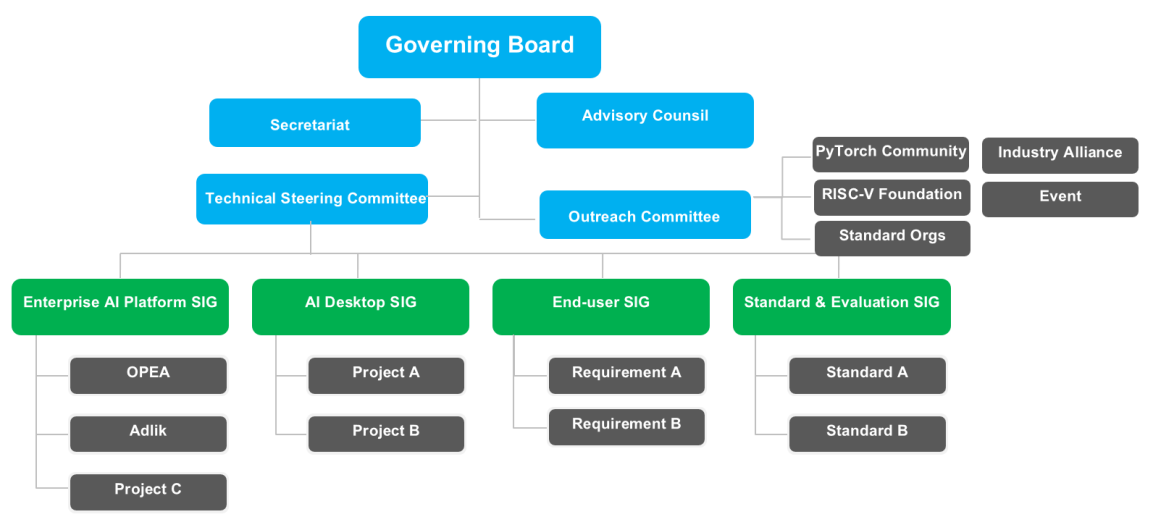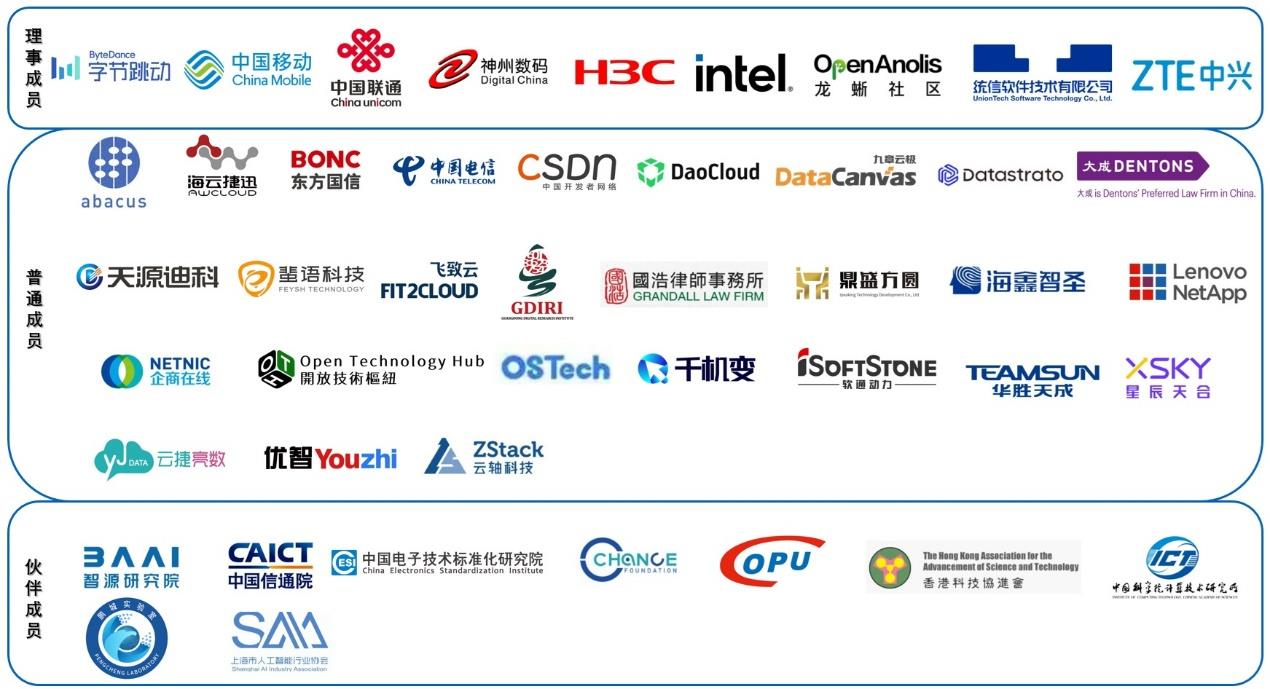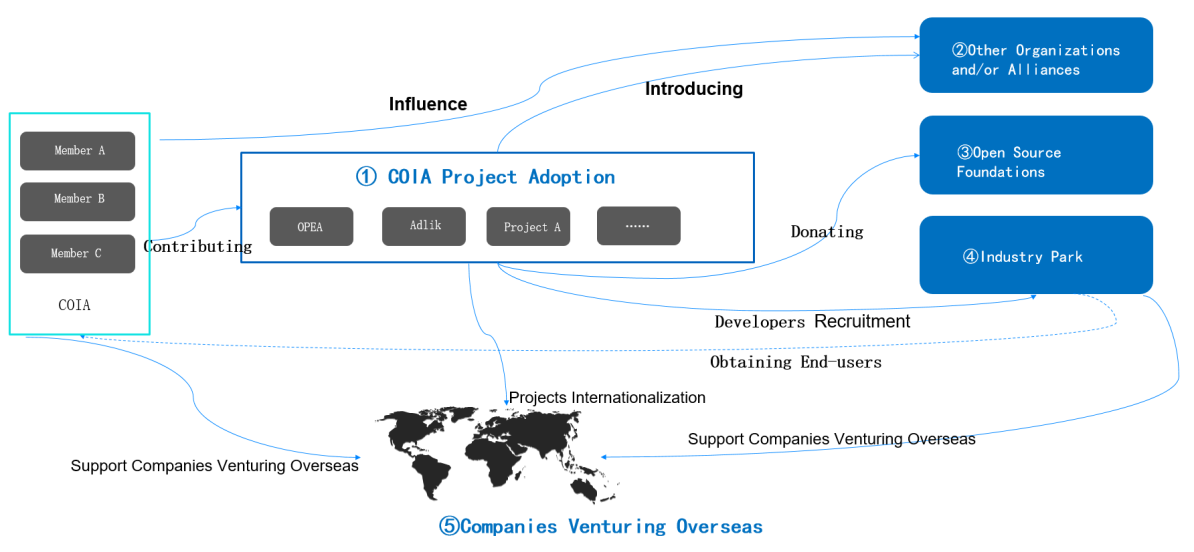With the thriving development of artificial intelligence (AI) and large model technologies, their application and implementation have become increasingly crucial. To better facilitate the adoption of AI and large model technologies in Chinese enterprises, incubate more AI application projects, and support more innovative projects in the AI sector, Chinese technology enterprises, public institutions, research institutions, and other organizations have jointly prepared and initiated the Cooperative Open Intelligent Computing Alliance (COIA).
Background of Establishment
AI and LLM are booming, and application and landing are becoming increasingly important. In order to better promote the landing of AI and LLM technologies in Chinese enterprises, incubate more AI application projects, and support more Unicorn companies in the field of AI, Intel China, China Unicom, ByteDance, H3C, Digital China, China Mobile, Alibaba Cloud, ZTE, China Information and Communication Institute and other enterprises and institutions are preparing to launch the Cooperative Open Intelligent Industry Computing (COIA for short).
On the other hand, the world's largest open source organization, Linux Foundation AI&Data (LF AI&Data), launched the enterprise level open platform project OPEA (Open Platform for Enterprises AI) in April 2024. OPEA (Open Platform for Enterprise AI) is an open ecosystem orchestration framework aimed at integrating efficient generative AI technologies and workflows to help businesses adopt AI faster and realize business value. OPEA is known as the Kubenetes of the AI industry, which will greatly accelerate the application and implementation of AI. OPEA official website https://opea.dev/ By September 11, 2024, a total of 41 global high-tech enterprises have joined OPEA, including China Unicom, ByteDance, H3C, ZTE, Digital China, etc. OPEA has become a seed project of the Open Intelligent Computing Industry Alliance.
Under the guidance of LF AI&Data and the China Open Source Software Promotion Alliance, the alliance has initiated a seminar and preparatory conference for the implementation of enterprise level AI. At the conference, we received support from over 40 domestic and foreign enterprises
COIA Framework
The alliance sets up institutions such as the Council, Secretariat, Expert Advisory Committee, Technical Committee, External Relations Committee, etc. Aim to promote industrial development and coordinate resources from all parties.

Figure 1 Alliance Organizational Structure
The following is a brief description of the main organizational structure and functions of the alliance:
Board:
The Board is the highest decision-making body of the Alliance, responsible for the development strategy, decision-making and supervision of major issues of the Alliance.
The members of the board of directors are usually appointed by the founding members or representatives of core enterprises of the alliance.
Their responsibilities include reviewing annual work plans, financial budgets, and major issues of the alliance. Secretariat: The Secretariat is the permanent executive body of the Alliance, responsible for daily management and operation.
Its main responsibilities include organizing meetings, coordinating the work of various committees, implementing resolutions of the board of directors, and coordinating external liaison affairs of the alliance.
The Secretariat is usually composed of professionals to ensure the efficient operation of the alliance's work. Expert Advisory Committee: The Expert Advisory Committee is composed of renowned scholars, technical experts, and industry leaders in the industry, responsible for providing intellectual support and technical consulting to the alliance.
Their responsibilities include providing technical strategic advice, evaluating project feasibility, and providing guidance for the alliance's technical direction. Technical Oversight Committee: The main responsibility of the Technical Oversight Committee is to promote technological research and development, facilitate technical cooperation and standard setting within the industry.
The committee is usually composed of technical experts, responsible for developing technology roadmaps, promoting technological innovation, and transforming and applying technological achievements. Outreach Committee: The Outreach Committee is responsible for the external liaison and cooperation of the alliance, aiming to expand the influence of the alliance and establish contacts with other organizations, government agencies, industry alliances, etc.
The responsibilities of the committee include promoting the achievements of the alliance, facilitating cross industry cooperation, and coordinating relationships with external partners. Security Committee:
Responsible for researching open source software supply chain projects within the scope of alliance technology.
Responsible for researching open source license agreements and providing technical support in licensing for open source projects included in the alliance.
Responsible for research and consulting on intellectual property business within the scope of the alliance. As of 1st Jan, 2025, the alliance has collected 45 members (listed alphabetically in the figure below).
As of 1st Jan, 2025, the alliance has collected 45 members (listed alphabetically in the figure below).

Figure 2 Members (as of January 1, 2025)
The list of leaders and responsible persons of each institution is as follows
Board:
Members: ByteDance, China Mobile, China Unicom, Digital China, H3C, Intel, Open Anolis, Union Software, ZTE (in alphabetical order of company name)
Expert Advisory Committee:
Chairperson:
Lu Shouqun, former Executive Vice Director of the State Council Information Office and the "Father of Open Source" in China
Members:
Dr. Ibrahim Haddad, Vice President of Strategy at the Linux Foundation
Prof. HO Kin-chung, President of the Hong Kong Association for Science and Technology, Academician of the European Academy of Natural Sciences, and Justice of the Peace
Dr. Ray C.C. Cheung, Deputy President of City University of Hong Kong
Jiang Tao, Founder and President of CSDN
Lin Yonghua, Forbes China's 50 Outstanding Women in Science and Technology, Vice President and Chief Engineer of Zhiyuan Research Institute
Secretariat:
Secretary General:
Meng Wei LF AI&Data Chairperson of the Governing Board
Deputy Secretary General:
Tan Zhongyi, Deputy Secretary General of COPU, and Chairman of TOC of Open
Atomic Foundation
Members:
Xu Shunli (Intel), Yuan Liya (ZTE), Wang Shan (ZTE), Wang Jun (Hong Kong Association for Science and Technology)
Technical Oversight Committee (TOC)
Chairperson:
Shane Wang, R&D Director at Intel, Individual Independent Director of OIF
Vice Chairman:
Wang Changjin, Director of Intelligent Computing Research and Development at ZTE Corporation
Members:
Wang Qiang (China Academy of Information and Communications Technology), Lin Yan (Alibaba Cloud), Mo Jingjing (Digital China), Yue Longguang (China Unicom), Chen Yanjun (China Mobile), Wang Yaohua (Tongxin), Shen Haihao (Intel), Yu Yue (Pengcheng Laboratory), Wang Pu (Datan Technology)
Out Reach Committee:
Chairerson:
Hin Yang, Vice President of the Asia Pacific Region of the Linux Foundation
Vice Chairperson:
Meng Yingxia, Vice President and Editor in Chief of CSDN
Jin Meiqin, Alibaba Cloud Product Operations Expert
Members:
Tang Songlong (Open Source University) and Xue Bing (Feiyu Technology)
Security Committee
Chairperson:
Yang Liyun, Director of Cloud Computing Research Office at the Software Center of the Fourth Institute of Electronics
Vice Chairperson Tao Ye, Partner of Guohao Law Firm (Nanjing)
Missions

1) COIA collects open source projects from its members, forming a cluster of open source projects
2) Collaborate with alliances and associations in other industries to promote open source projects for AI and large-scale models into the industry
3) Encourage members to donate their open source projects to open source foundations, including the Linux Foundation and Apache Foundation
4) Collaborate with industrial parks to attract companies from industries such as finance, healthcare, and energy, and deploy COIA's open-source projects into their products
5) Through an open-source ecosystem, we help businesses expand overseas and globally
Free trial
Try Hosthub for free
It is very easy to integrate in your site or apps.